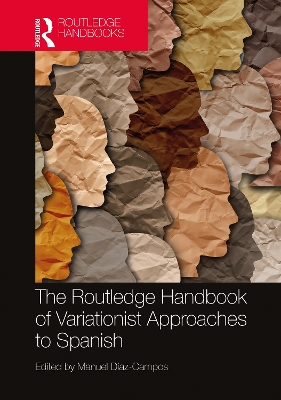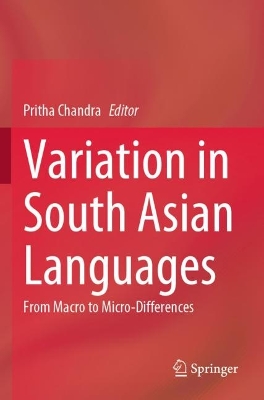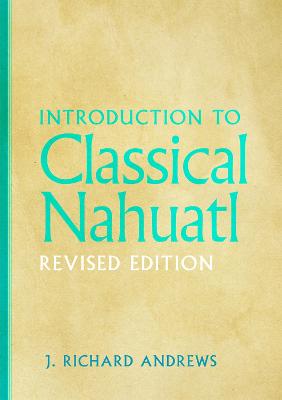Routledge Handbook of Variationist Approaches to Spanish
 portes grátis
portes grátis
Routledge Handbook of Variationist Approaches to Spanish
Diaz-Campos, Manuel
Taylor & Francis Ltd
10/2024
602
Mole
9781032067612
Pré-lançamento - envio 15 a 20 dias após a sua edição
Descrição não disponível.
Socio-Phonetics Part 1: Vowels 1. Vocalic Variation: A Sociolinguistic Analysis of Atonic Vowel Raising in Rural Michoacan, Mexico 2. Vocalic Phenomena in Andean Spanish Dialects 3. Sociolinguistic variation of final back vowels in urban Asturian Spanish Part 2: Plosive Consonants 4. Velarization of word-internal syllable coda stops 5. A Usage-Based Analysis of the Variable Production of /k/ and /d/ as Interdental Fricatives 6. Intervocalic /d/ as a Gradual Variable in Caracas Spanish Part 3: Affricate Consonants 7. The Social Stratification of /?/: A Process of Lengthening in Caracas Spanish Part 4: Fricative Consonants 8. The Last Stronghold of Word-final /s/ in Barranquillero Spanish: Prevocalic Word-final /s/ in Cohesive Bigrams 9. Phonetic sensitivity does not condition variant-based social sensitivity: The case of intervocalic /s/ voicing in Costa Rican Spanish 10. Analyzing Andalusian Coronal Fricative Norms (ceceo, seseo, and distincion) Using a Sociophonetic Demerger Index 11. The Diffusion of sheismo and Perceptions of portenidad in Buenos Aires Spanish Part 5: Liquids 12. Variationist Analyses of Assibilated (r) in Peruvian Spanish 13. The Sociolinguistic Conditioning of Lateralization of /?/: Variation in Three Puerto Rican Communities 14. A Socio-phonetic Exploration of Coda Liquids and Vocalization in Cibao Dominican Spanish 15. Sociolinguistics of Yeismo in Madrid: Dynamics of Variation and Change Part 6: Nasals 16. Apparently Real Changes: Revisiting final (-m) in Yucatan Spanish Morphosyntax Part 7: Forms of Address 17. Who are you? A Closer Analysis of tu and vos in Caleno Spanish 18. Vosotros versus Ustedes: Asymmetries in 2PL Pronouns across Spanish Dialects 19. The Spanish Second-person tu and usted as Forms of Address: Grammatical Variation and Cognitive Construction Part 8: Tense and Aspect 20. The Expression of Futurity in Spanish: An Empirical Investigation 21. Variation of the Simple Present and Present Progressive: Peruvian Spanish, Pear Stories and Language Contact, oh my! 22. Concordantia Temporum in Andean Spanish 23. Form-function Asymmetry: An Example from Spanish Past Time Expressions Part 9: Mood 24. A Cross-dialectal Analysis of Variable Mood Use in Spanish Part 10: Pronominal Forms and Clitics 25. Differential Object Marking in Monolingual and Bilingual Spanish 26. Variable Constraints on Spanish clitics: A Cross-dialectal Overview 27. Acquiring Constraints on Variable Morphosyntax: Subject-verb ~ verb-subject Word Order in Child Spanish 28. Overlapping envelopes of variation: The case of lexical noun phrases and subject expression in Spanish Part 11: Other Phenomena 29. No se sabia de que eso iba a pasar: Do Lexical Frequency and Structural Priming Condition dequeismo? 30. Diatopic Variation in the Alternation of para and pa' 31. An Agreeable Topic: The Pluralization of Presentational haber 32. Traces of the Past in a Lengthy Change (Still) in Progress: Persistence and Generalization in Prepositional Relative Clauses in Peninsular Spanish Lexical Variation Part 12: Diachronic and Synchronic Perspectives 33. Social Factors Contributing to Semantic Change 34. The Variable Use of que and cual Followed by a Noun Phrase in the Spanish of the Americas 35. Sociolinguistic Factors in the Development of usted in the Colombian Southwest During the 20th century: Evolution of its Familiar Usage 36. Lexical Borrowing and Variation: The Case of Amerindian Words in Latin American Spanish 37. Lexical Variation Among Spanish and Bilingual Communities in Mexico 38. Sociolinguistic Factors in the Preference for Direct and Indirect Expression of Sexual Concepts
Este título pertence ao(s) assunto(s) indicados(s). Para ver outros títulos clique no assunto desejado.
Palabras Clave;Hispanic sociolinguistics;Conditional Inference Tree;Spanish language variation;Mixed Effects Models;Spanish phonology;Younger Speakers;Spanish morphosyntax;Andean Spanish;socio-phonetics;Mexican Spanish;lexical variation;Mixed Effects Linear Regression Models;Extralinguistic Factors;Morphosyntactic Variation;Peruvian Spanish;Lexical Frequency;Spanish Monolinguals;Sociolinguistic Interviews;Mid-vowels;Puerto Rican Spanish;Vowel Raising;Mixed Effects Logistic Regression Modeling;Speaker's Sex;Atonic Syllables;Torres Cacoullos;Vice Versa;Mixed Effects Logistic Regressions;Matched Guise Test;Verb Lexeme;Cd
Socio-Phonetics Part 1: Vowels 1. Vocalic Variation: A Sociolinguistic Analysis of Atonic Vowel Raising in Rural Michoacan, Mexico 2. Vocalic Phenomena in Andean Spanish Dialects 3. Sociolinguistic variation of final back vowels in urban Asturian Spanish Part 2: Plosive Consonants 4. Velarization of word-internal syllable coda stops 5. A Usage-Based Analysis of the Variable Production of /k/ and /d/ as Interdental Fricatives 6. Intervocalic /d/ as a Gradual Variable in Caracas Spanish Part 3: Affricate Consonants 7. The Social Stratification of /?/: A Process of Lengthening in Caracas Spanish Part 4: Fricative Consonants 8. The Last Stronghold of Word-final /s/ in Barranquillero Spanish: Prevocalic Word-final /s/ in Cohesive Bigrams 9. Phonetic sensitivity does not condition variant-based social sensitivity: The case of intervocalic /s/ voicing in Costa Rican Spanish 10. Analyzing Andalusian Coronal Fricative Norms (ceceo, seseo, and distincion) Using a Sociophonetic Demerger Index 11. The Diffusion of sheismo and Perceptions of portenidad in Buenos Aires Spanish Part 5: Liquids 12. Variationist Analyses of Assibilated (r) in Peruvian Spanish 13. The Sociolinguistic Conditioning of Lateralization of /?/: Variation in Three Puerto Rican Communities 14. A Socio-phonetic Exploration of Coda Liquids and Vocalization in Cibao Dominican Spanish 15. Sociolinguistics of Yeismo in Madrid: Dynamics of Variation and Change Part 6: Nasals 16. Apparently Real Changes: Revisiting final (-m) in Yucatan Spanish Morphosyntax Part 7: Forms of Address 17. Who are you? A Closer Analysis of tu and vos in Caleno Spanish 18. Vosotros versus Ustedes: Asymmetries in 2PL Pronouns across Spanish Dialects 19. The Spanish Second-person tu and usted as Forms of Address: Grammatical Variation and Cognitive Construction Part 8: Tense and Aspect 20. The Expression of Futurity in Spanish: An Empirical Investigation 21. Variation of the Simple Present and Present Progressive: Peruvian Spanish, Pear Stories and Language Contact, oh my! 22. Concordantia Temporum in Andean Spanish 23. Form-function Asymmetry: An Example from Spanish Past Time Expressions Part 9: Mood 24. A Cross-dialectal Analysis of Variable Mood Use in Spanish Part 10: Pronominal Forms and Clitics 25. Differential Object Marking in Monolingual and Bilingual Spanish 26. Variable Constraints on Spanish clitics: A Cross-dialectal Overview 27. Acquiring Constraints on Variable Morphosyntax: Subject-verb ~ verb-subject Word Order in Child Spanish 28. Overlapping envelopes of variation: The case of lexical noun phrases and subject expression in Spanish Part 11: Other Phenomena 29. No se sabia de que eso iba a pasar: Do Lexical Frequency and Structural Priming Condition dequeismo? 30. Diatopic Variation in the Alternation of para and pa' 31. An Agreeable Topic: The Pluralization of Presentational haber 32. Traces of the Past in a Lengthy Change (Still) in Progress: Persistence and Generalization in Prepositional Relative Clauses in Peninsular Spanish Lexical Variation Part 12: Diachronic and Synchronic Perspectives 33. Social Factors Contributing to Semantic Change 34. The Variable Use of que and cual Followed by a Noun Phrase in the Spanish of the Americas 35. Sociolinguistic Factors in the Development of usted in the Colombian Southwest During the 20th century: Evolution of its Familiar Usage 36. Lexical Borrowing and Variation: The Case of Amerindian Words in Latin American Spanish 37. Lexical Variation Among Spanish and Bilingual Communities in Mexico 38. Sociolinguistic Factors in the Preference for Direct and Indirect Expression of Sexual Concepts
Este título pertence ao(s) assunto(s) indicados(s). Para ver outros títulos clique no assunto desejado.
Palabras Clave;Hispanic sociolinguistics;Conditional Inference Tree;Spanish language variation;Mixed Effects Models;Spanish phonology;Younger Speakers;Spanish morphosyntax;Andean Spanish;socio-phonetics;Mexican Spanish;lexical variation;Mixed Effects Linear Regression Models;Extralinguistic Factors;Morphosyntactic Variation;Peruvian Spanish;Lexical Frequency;Spanish Monolinguals;Sociolinguistic Interviews;Mid-vowels;Puerto Rican Spanish;Vowel Raising;Mixed Effects Logistic Regression Modeling;Speaker's Sex;Atonic Syllables;Torres Cacoullos;Vice Versa;Mixed Effects Logistic Regressions;Matched Guise Test;Verb Lexeme;Cd







